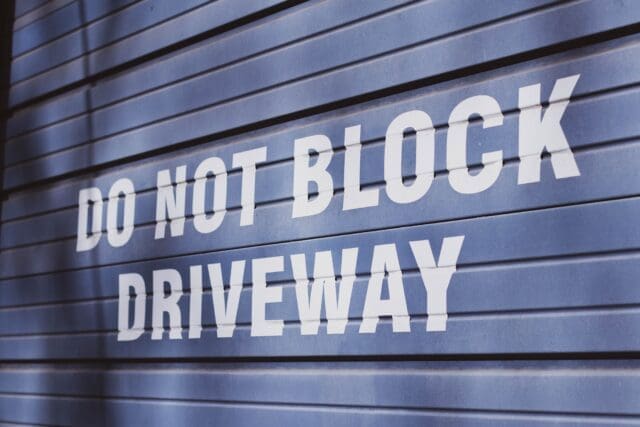Sealcoating is the process of applying a sealant on asphalt pavements and parking lots to protect them from damage by weather. Most times, penetrating moisture and sunlight oxidation affects asphalt roads. Such conditions weaken the road surface, leading to erosion. The eroded surface allows moisture to go deeper into the layer, causing larger cracks. These cracks are why it is necessitates sealcoating.
The sealcoating timing determines the success, quality, and durability of the project. You need to know how different factors affect the drying and curing process of the sealcoat. This info helps you know the best time for carrying out the project. The drying process of the sealcoat should take at least 24-48 hours. This article provides factors that will help determine the best time for sealcoating.
Weather conditions
The experts from CSG Sealcoating, Orlando say that weather is one of the major factors to consider for successful sealcoating. It determines how well the sealcoat dries up and adheres to the road. Such weather conditions include;
Sunlight
The warmth and sunlight reaching the pavement determine the quality of the sealcoat. The area covered by shade receives less sunlight which means the surface is cooler. It thus takes longer for the sealcoat to dry up in such places. The contractors should target the time when there is sunlight accessing the area. This is ideal for applying the sealcoat.
If the area does not receive sunlight at all, the quality of the sealcoat becomes low. The sealcoat dries up from top to bottom. Thus, there has to be enough sunlight and heat to draw the moisture from the inner layers into the air.
Cloud cover and humidity
When it is cloudy, the heat from the sun does not reach the sealcoat. This prolongs the drying process as heat is one of the factors needed for quick and proper drying. Clouds also make the air more humid. High humidity means the air cannot absorb the moisture from the pavement as fast as it would when dry.
Also, when the humidity reaches 100%, fog forms, which results in ground-level clouds. The contractors should wait until the fog clears and the temperatures increase. High temperatures are suitable for quick drying. A prolonged period of drying reduces the sealcoat quality even after drying up. For quality sealcoating, there should be little to no clouds and less than 50% humidity.
Photo by Alex from PexelsWind
The wind is suitable for drying, but it may also lead to challenges during sealcoating. If the wind is too strong, the coating may get blown onto property nearby, resulting in costly damage. Consider a less windy day for your sealcoating process. The wind should be gusting below ten mph.
Temperatures
How hot or cold the temperatures are, determines the success of the process. If the conditions fall to freezing or lower, the water in the sealcoat becomes frozen and compact. Freezing causes a separation between the pavement and the sealcoat. But, if the heat rises to 90 degrees or more, the sealcoat bakes before it holds on the pavement. The binder may also melt in such high heat. The ideal temperature for the process is about 55degrees.
Time of the year
The best time of the year for sealcoating is dependent on the level of temperatures and rainfall. Sealcoating requires warmth and sunlight. For blacktop sealcoating, the temperatures should be at 70 degrees or more on a sunny and less humid day. Asphalt sealcoating requires at least a dry and sunny day. For perfect sealcoating, you should thus target the months of May to September. This is the period late in the spring and during summer.
Other things to consider
When planning to sealcoat your driveway, you will need to consider a few other things other than the time of day. Here are the other things that you must consider before you start your sealcoating project:
- Traffic – after sealcoating your driveway, you need to give it at least 24 hours to cure before you start parking your cars or driving on it. Therefore, you will need to look for alternative parking spots during this period until you’ve completed your sealcoating project.
- Precipitation – weather dramatically determines the success of a paving project. Apart from doing your project when you have the perfect temperature, there shouldn’t be any rain forecasted if you want to sealcoat your pavement. Typically, you should ensure that your driveway has at least 72 rain-free hours after sealcoating it.
- Dryness – before you start your sealcoating project, you need to make sure it’s completely dry. Any moisture on your driveway can affect the results of your project and shorten the lifespan of the sealant. So, if you plan to seal a wet surface, don’t do it—otherwise, you will need to repeat the whole process.
Bottom Line
Choosing the perfect time for your sealcoating project will determine the success and durability of the project. So, if you are nervous, inexperienced, or unsure about how to sealcoat your driveway, consider hiring professional sealcoating experts to help you with the project. Hiring an expert in your sealcoating project ensures that the job is done correctly. Besides, it frees your time, thus allowing you to focus on other things.
Featured Photo by Zachary Keimig on Unsplash




